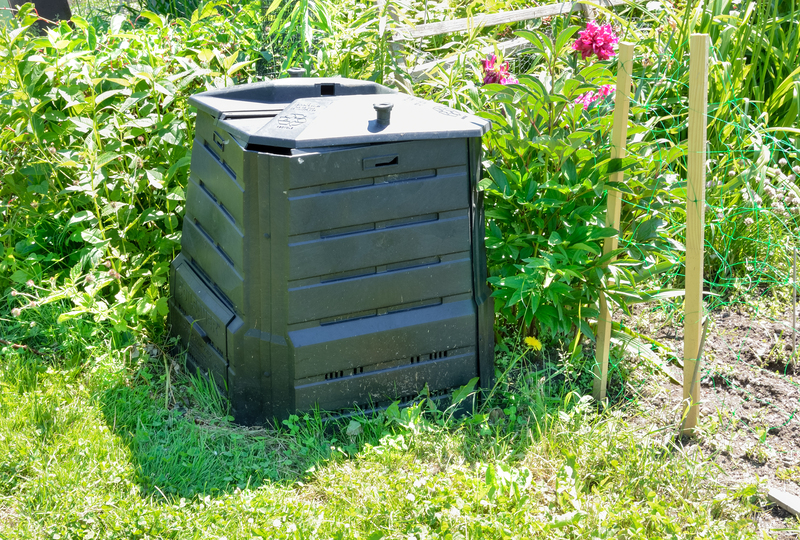How to Make Bulky Waste Removal More Cost-Effective
Bulky waste removal is a growing concern for homeowners, businesses, and local authorities alike. Items such as old furniture, appliances, mattresses, and broken equipment occupy valuable space and are often challenging to transport. With the increasing costs of disposal and the environmental impact of landfill waste, finding ways to manage bulky waste affordably is essential. This comprehensive guide will detail proven strategies for making bulky rubbish disposal more cost-effective, sustainable, and efficient.
Understanding Bulky Waste: What Qualifies?
Before optimizing your bulky waste collection and removal processes, it's crucial to identify what constitutes bulky waste. Typically, bulky waste refers to items that are too large to fit in standard waste bins. Examples include:
- Sofas, armchairs, and other large furniture pieces
- White goods such as refrigerators, washing machines, and ovens
- Beds, mattresses, and wardrobes
- Carpets, flooring, and large rugs
- Garden waste like tree branches and fencing
- Broken outdoor equipment, bikes, and toys
These items often require specialized handling and disposal, which can lead to increased costs if not managed strategically.

Why Is Bulky Waste Disposal So Expensive?
Several factors contribute to the high costs associated with bulky waste removal:
- Transport Challenges: Large items need significant space and effort to move. Often, a specialized vehicle or skip is required.
- Labour Costs: Bulky items typically require several people to lift and load safely.
- Landfill and Disposal Fees: Landfills charge by volume and weight, making large items especially costly to discard.
- Environmental Regulations: Compliance with rules for hazardous materials or recycling can add administrative costs.
- Lack of Awareness: Many people aren't aware of cheaper or free alternatives for disposal.
With the right knowledge and approach, you can significantly reduce your bulky item removal costs. Let's explore effective solutions.
Tips to Make Bulky Waste Collection More Affordable
1. Sort and Separate Waste Items
The first step in cost-effective bulky waste management is sorting. Segregate all your waste into categories such as recyclables, reusable items, and true rubbish. This allows you to maximize recycling options and minimize disposal volume--saving on fees.
- Separate metals, glass, and wood for recycling
- Identify items in good condition for donation or resale
- Group together hazardous materials for specialist disposal
Tip: Keeping items organized also helps waste collectors complete the job faster, which may lower service charges!
2. Explore Donation and Reuse Options
Many bulky items aren't actually waste--they're simply unwanted. Before paying for removal, consider:
- Donating to charities (furniture, electronics, mattresses etc.)
- Offering free items on community boards or marketplaces (Freecycle, Craigslist, Facebook Marketplace)
- Selling gently-used goods online
Reducing landfill disposal by extending the life of usable items is both eco-friendly and cost-saving.
3. Utilize Local Authority Bulky Waste Services
Most councils offer bulky waste collections at subsidised rates or occasionally even free pick-up days. Check your local council website for:
- Scheduled bulky waste collection events
- Drop-off centres for large items
- Limits on free collection (e.g., two or three items per year)
By aligning your disposal with these opportunities, you can save significantly on bulky waste removal costs.
4. Arrange a Group Collection
Bulk discounts aren't just for groceries! If you and your neighbours schedule collections together, you may qualify for reduced group rates from private junk removal firms. Share the cost of a skip or truck and enjoy better value.
- Coordinate via neighbourhood apps or social media
- Request a quote based on combined item volumes
Note: This works best for apartment blocks, housing associations, or community clean-up days.
5. Choose the Right Disposal Service
The cost of removing bulky rubbish can vary drastically between providers. Always:
- Obtain multiple quotes
- Check for hidden fees (labour, congestion charges, minimum loads)
- Verify the company's licensing and responsible disposal policies
Some companies even recycle items and pass on the savings to customers. Look for cost-effective bulky waste collection services that are transparent about their process.
6. Break Down Bulky Items Yourself
Items are often charged by volume as well as weight. If possible, dismantle furniture, beds, or equipment into smaller parts. This:
- Reduces space requirements in collection vehicles
- Makes items easier and safer to handle
- Can lead to a smaller load--and a lower removal fee
Caution: Always follow safety guidelines when disassembling large or heavy objects.
7. Consider 'Man and Van' Bulky Waste Removal Services
Compared to skip hire, "man and van" services are often more affordable for small to moderate loads. They charge based on the amount of waste and collection effort rather than hiring a whole skip. Benefits include:
- Flexible scheduling
- No need to acquire council skip permits
- Labour is included
For one-off or occasional bulky item disposals, this can be the most cost-effective removal solution.
8. Schedule Removal During Off-Peak Times
Waste collection services may offer cheaper rates outside of peak seasons (e.g., spring cleaning or post-holiday periods). When possible:
- Book collections mid-week
- Avoid the end-of-month rush when rental agreements change
This flexibility can help you secure better rates for bulky waste removal compared to high-demand slots.
9. Reduce, Reuse, Recycle--Think Before You Buy
The cheapest way to manage bulk waste is not to create it! Practice sustainable buying habits:
- Choose durable, repairable products
- Buy second-hand or upcycled furniture
- Rent equipment for short-term needs
By minimizing unnecessary purchases, you lower your long-term bulky item removal costs and reduce environmental impact.
Cost Comparison: Bulky Waste Removal Methods
To choose the most cost-effective approach, consider the pros and cons of each major bulky waste disposal option. Here's a simplified comparison:
| Removal Method | Average Cost | Best For | Notes |
|---|---|---|---|
| Council Collection | Low to Free | Smaller loads, occasional items | Limited frequency, may have waiting lists |
| 'Man & Van' Service | Moderate | One-off moves, assorted items | Flexible, labour included |
| Skip Hire | Moderate to High | Large clearances, DIY projects | Permit may be needed, mainly self-load |
| DIY Transport to Tip | Low (fuel only) | Small to moderate loads | Access to vehicle and time needed |
| Donation/Resale | Free/Possible profit | Usable items | Arranging collection/delivery is your responsibility |
Key takeaway: The most cost-effective bulky item disposal method depends on your volume, location, and available resources.
Eco-Friendly Bulky Waste Disposal: Save Money, Save the Planet
Sustainable disposal is not only better for the environment--it can be more affordable in the long run. Here's how green thinking helps you cut costs:
- Reduced landfill fees: Most landfill sites charge more for unsorted or non-recyclable items.
- Charity partnerships: Donating directly to social enterprises often comes with free collection.
- Community swaps and markets: Local reuse events prevent fetch and delivery costs.
Remember: Many councils and private haulers reward green disposal through discounts for separated and recycled materials.
Case Study: How One Family Halved Their Bulky Waste Removal Costs
The Smith family recently moved and faced a mountain of unwanted furniture, beds, and an old fridge. By applying these tips:
- They offered sellable items online, recouping ?80
- Donated a dining set and bookshelves to a local charity (free removal)
- Transported small electronics to the tip themselves (avoiding collection charges)
- Used council collection for remaining mattress and appliances at a set fee
In total, they saved over 50% compared to booking a single all-in removal company!

Frequently Asked Questions about Affordable Bulky Waste Removal
What's the cheapest way to dispose of a bulky item?
The cheapest options are usually donation, resale, or using free council pick-up schemes if available. Otherwise, teaming up with neighbours or transporting items yourself reduces costs.
How can I get a bulky item collected for free?
Many charities collect furniture and white goods in working condition without charging. Look for "free collection" services in your area or during annual council clean-up events.
Are bulky waste items ever recycled?
Absolutely--metals, wood, and electronics are commonly recycled. Choose eco-friendly bulky rubbish removal services that prioritize recycling to lower both cost and environmental footprint.
Is it worth disassembling my furniture before removal?
Yes--breaking items down reduces volume and may lower removal charges. It also makes transport safer and easier.
Can I hire a skip for just one or two bulky items?
That's often not cost-effective--skip hire is better for large volumes. "Man and van" services usually charge less for small amounts of waste.
Conclusion: Smarter Bulky Waste Disposal For Your Wallet
Making bulky waste removal affordable is all about planning and resourcefulness. Start by sorting and reusing where possible, tap into local services, and compare multiple disposal options. With a little effort and creativity, you can manage your bulky rubbish disposal needs without breaking the bank and do your part to protect the environment.
For even more savings, stay up-to-date with your council's waste schemes and embrace the growing circular economy by buying, selling, and donating responsibly. Whether you're dealing with an appliance upgrade, a home renovation, or a seasonal clearout, these tips will ensure your bulky waste removal is always as cost-effective as possible.
- Plan ahead and organize your waste for efficient removal
- Use charity, resale, or community services before disposal
- Compare all available council and private options
- Always prioritize sustainable, eco-friendly solutions
The result: A cleaner home, a healthier planet, and more cash in your pocket!
